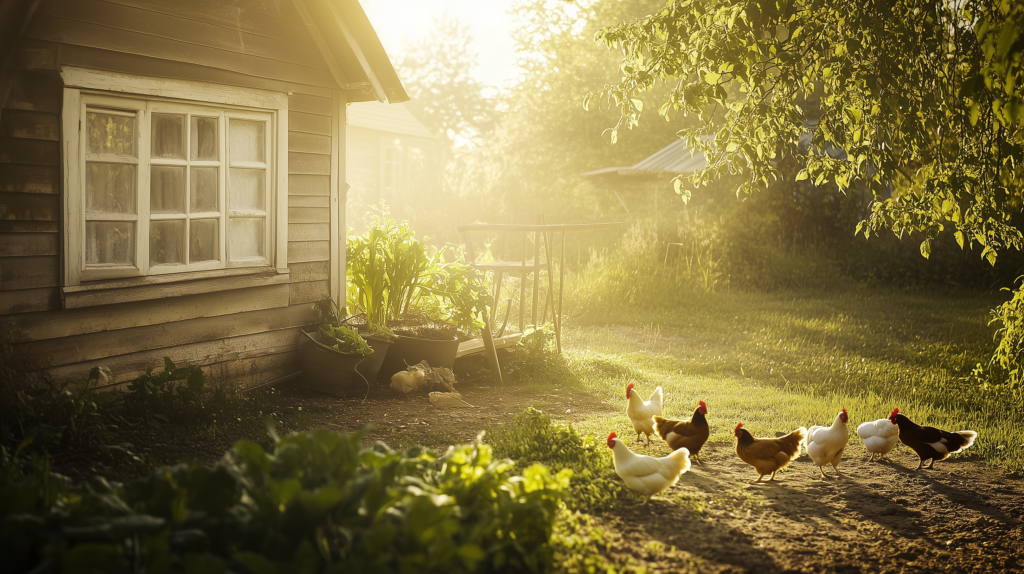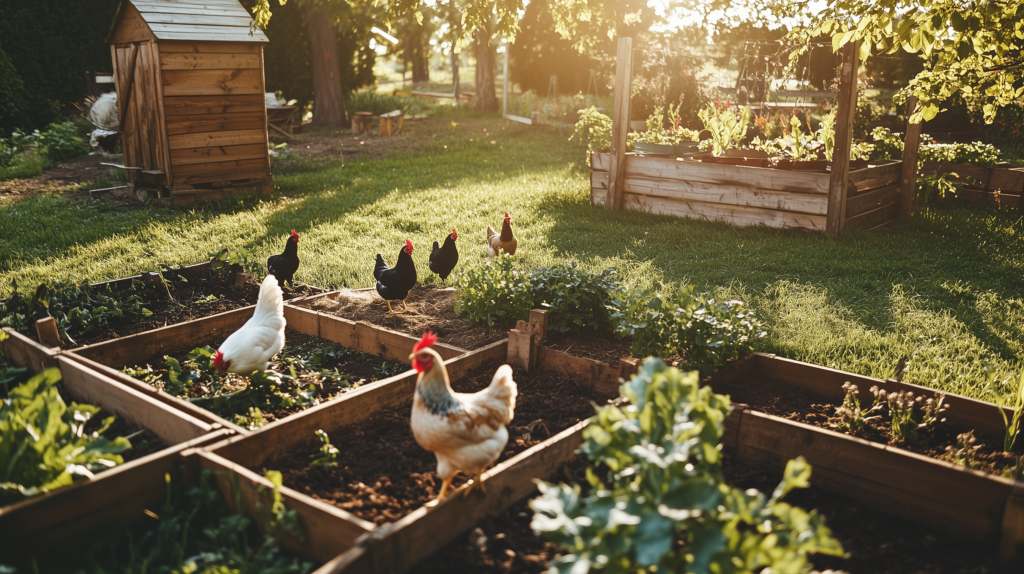This post may contain affiliate links, including those from Amazon Associates. If you make a purchase through these links, I may earn a commission at no additional cost to you. Learn more about our affiliate policy.
Imagine stepping outside to harvest fresh greens from your garden or collect eggs in the morning from your backyard chickens. Knowing these simple acts contribute to your family’s nourishment is the beauty of homesteading. It fosters independence, sustainability, and a deeper connection to the earth.
Maybe you’ve dreamed of eating food you grow yourself, or are seeking a life that is closer to nature. Homesteading may feel overwhelming at first. But the truth is, it’s not about doing everything at once. It’s about taking it one step at a time and learning how to provide for yourself in ways that align with your values. Whether you’re living on a spacious rural property, in a suburban neighborhood, or even in an apartment, homesteading is within your reach.
What Is Homesteading?
Homesteading today is about self-sufficiency, blending old ways with modern tools. It used to mean farming under the Homestead Act in the 1800s. Now, it’s about growing your food, preserving it, raising animals, or generating your own sustainable energy.
Homesteading isn’t for everyone and it can look many different ways. It can mean a big garden and animals for some, but for others, it’s about herbs on a windowsill or baking bread. The core of homesteading is being resourceful, sustainable, and taking small steps towards independence.
The Beginner’s Homesteading Mindset
For new homesteaders, it’s best to start small with DIY projects. It’s easy to get inspired by others, but trying too much can burn you out. Pick one project that excites you, like planting herbs, making jam, or composting.
Celebrate your small wins, like your first tomato or a perfectly baked loaf of bread. These moments build confidence and momentum that will keep you going. Don’t get discouraged by setbacks. Every mistake is a step towards your success.
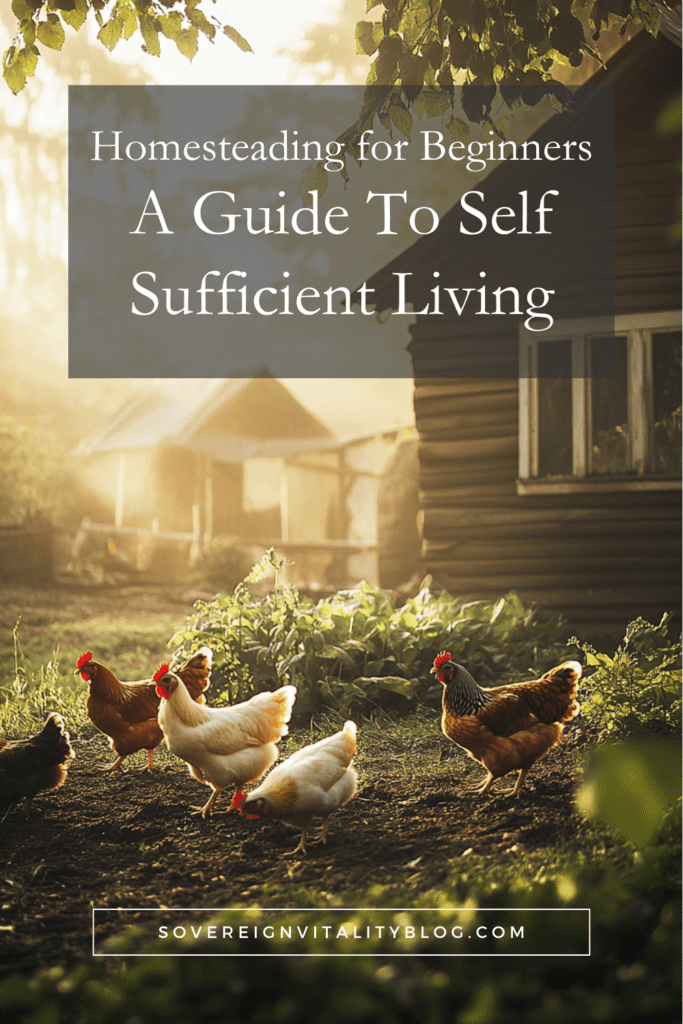
How to get started homesteading?
Starting a homesteading journey is a fulfilling path to self-sufficiency. There are many ways to incorporate these techniques from urban gardening to rural farming. This lifestyle helps you rely less on grocery stores, live simpler, and connect more with nature.
What Modern Homesteading Means
Homesteading doesn’t need a lot of land or off-grid living. It fits in many places, from apartments to suburban homes. This means you can start your urban homesteading or permaculture gardening right away, no matter where you live.
Benefits of Self-Sufficient Living
Homesteading saves money with diy projects like homemade cleaning products and preserved food. Learning skills like food preservation and carpentry makes for a more empowered and self-reliant lifestyle.
Common Misconceptions About Homesteading
- Homesteading requires a large amount of land or rural living.
- It is an all-or-nothing approach, with no room for incremental changes.
- Homesteading is only for those with extensive farming or gardening experience.
The truth is, homesteading is a journey of learning and adaptation. It works in urban and suburban areas. Start small, build essential skills, and move towards self-sufficiency at your pace.
Essential Skills for New Homesteaders
Homesteading is about gaining practical skills for self-reliance. As a beginner, focus on one or two areas before expanding. Each skill adds to your self-sufficiency.
Gardening Basics: Growing Your Own Food
Gardening is a key part of homesteading. Growing your own food, even a small herb garden, is rewarding. Start with easy crops for beginners and focus on nurturing their growth.
Best Crops for Beginners:
- Herbs: Basil, mint, and parsley are easy to grow and need little care.
- Leafy Greens: Lettuce, spinach, and kale grow fast and are easy to pick.
- Root Vegetables: Carrots, radishes, and beets need a bit more space but are worth it.
- Tomatoes: Great for pots or beds, they require little effort for big rewards.
If space is tight, try raised beds, containers, or vertical planters. Healthy soil is key, so composting is a good way to enrich your plants. Basic tools like a trowel, gloves, and a watering can make gardening easier.
Food Preservation: Saving the Harvest
Once your garden produces, preserving food is the next step. This skill lets you enjoy your harvest long after it’s in season.
Popular Preservation Methods:
- Canning: Ideal for jams, pickles, and sauces.
- Freezing: Great for berries, veggies, and herbs, needing little equipment.
- Fermenting: A fun way to make sauerkraut, kimchi, or yogurt, keeping nutrients.
Canning might seem scary, but it’s easy once you get the hang of it. You need to sterilize jars, follow tested recipes, and seal them right. For beginners, freezing is a simple way to start, needing just containers or freezer bags.
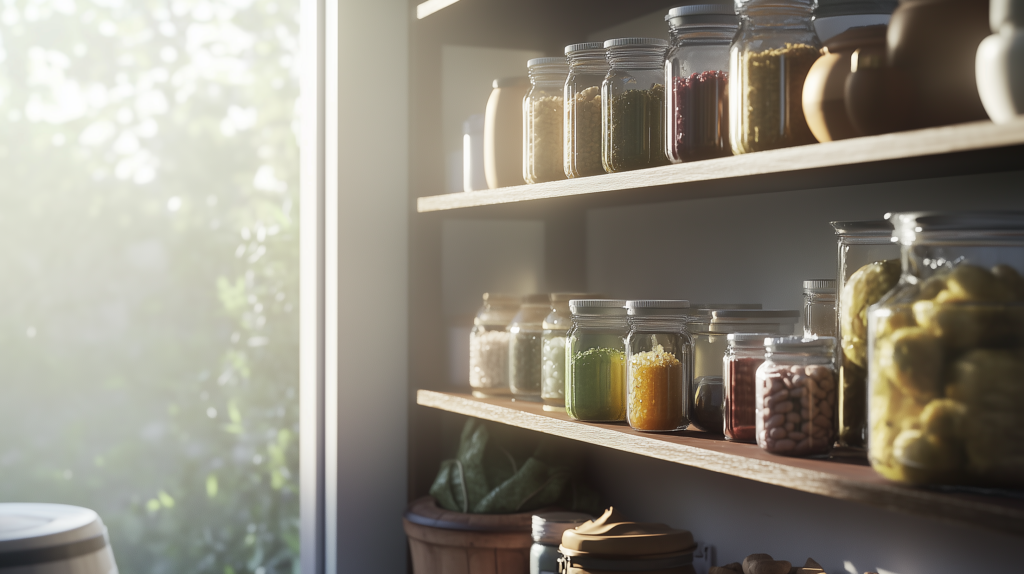
Raising Animals: Chickens, Rabbits, and Beyond
Raising animals is a key part of homesteading, yet it’s accessible. Many start with chickens due to their resilience, ease of care, and fresh eggs. A small flock of three or four hens is ideal for most backyards.
Goats are another excellent choice. They give milk, dairy, and meat. They also help clear land and keep pastures healthy. Start with 2-4 does and 1 buck.
As your homestead grows, you might add sheep, rabbits, or cows. Each animal helps make your land more self-sufficient. They provide food, fertilizer, and more.
Starting small and learning animal care is key. Expand your animal family as you gain experience and resources. A diverse range of animals makes your homestead more sustainable and self-sufficient.
Pro tip: Before acquiring animals, it’s crucial to understand their care and check local laws to ensure they are permissible.
Urban Homesteading: Thriving in Small Spaces
Homesteading doesn’t require vast acres of land. Even in a small space, like an apartment, you can achieve self-sufficiency. It’s about leveraging what you have creatively and efficiently.
Start with small, manageable projects that align with your available space:
- Grow Herbs Indoors: Basil, parsley, mint, and chives thrive on windowsills or sunny spots. They’re low-maintenance and enhance your cooking with fresh flavors.
- Container Gardening: Utilize pots or planters for veggies like cherry tomatoes, peppers, or lettuce. If you have a balcony, harness the sunlight to grow more.
- Vertical Gardens: Employ planters, wall-mounted pots, or shelving units to maximize vertical space. This is perfect for small patios or balconies.
Composting is also beneficial in urban settings. Use a worm bin or bokashi system to convert kitchen scraps into compost. This compost enriches your plants or can be donated to local gardens.
Homesteading encompasses more than just gardening. You can begin homesteading in your apartment by:
- Making homemade cleaning products reduces chemical use and waste.
- Engage in baking bread or preserving produce from the farmer’s market.
- Participate in a community garden if you need more space.
Urban homesteading proves you can lead a self-sufficient life without a large yard. It’s about beginning small and finding innovative ways to live sustainably daily.
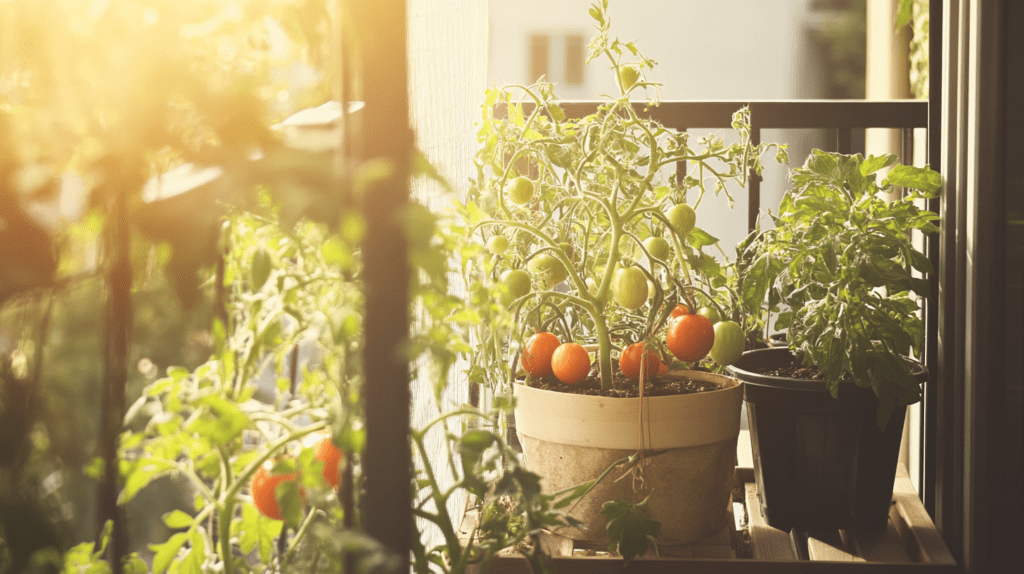
Homesteading on a Budget
There’s a common misconception that homesteading takes lots of time and money, but it doesn’t need to take a huge initial investment. Instead, it thrives on creativity and resourcefulness. Whether you’re tending to a garden, preserving food, or taking on DIY projects, there are many ways to do so without breaking the bank.
Begin by leveraging what you already possess or finding new uses for items:
- Upcycle Old Items: Transform wooden pallets into garden beds, and repurpose glass jars for canning or storage.
- Thrift Stores and Online Marketplaces: Scour for second-hand tools, gardening tools, or kitchenware at a fraction of the cost of new items.
- DIY Instead of Buying: Construct a compost bin, sew reusable bags, or craft furniture from scrap wood.
Participating in local homesteading communities is another smart move. By bartering or trading, you can acquire what you need while fostering connections. For instance, you might exchange fresh herbs for homemade soap or borrow tools you don’t own from a neighbor.
For gardening, start small to save money:
- Grow from Seeds: Seeds are cheaper than seedlings, and many can be saved from your harvest.
- Make Your Own Compost: Create rich compost from kitchen waste and yard debris instead of buying expensive soil.
Lastly, focus on small, affordable projects that match your skills and aspirations. Learn to bake bread, ferment vegetables, or concoct natural cleaning solutions. These activities not only save money but also reduce reliance on commercial products.
Homesteading on a budget is all about being inventive and resourceful. With a bit of creativity, you can enjoy the rewards of a self-sufficient lifestyle without overspending.
Overcoming Common Challenges
Homesteading comes with its share of challenges, but they can be overcome with creativity and determination.
Time is a significant concern for many. Begin with small projects that fit your schedule. Growing herbs or cooking meals in batches is feasible even for the busiest individuals.
Space can be a hurdle, but it’s not insurmountable, even in small yards or balconies. Employ vertical gardens, hanging planters, and container gardening. Even compact spaces can compost with worm bins or other compact setups.
Lastly, knowledge can seem daunting. But, every homesteader begins somewhere. Blogs, YouTube, and local workshops can guide you. You don’t need to master everything at once—focus on one skill at a time.
Conclusion: Start Your Journey Today
Homesteading is more than a lifestyle—it’s a journey. It’s not about being flawless or accomplishing everything at once. It’s about taking small, meaningful steps like planting seeds, baking bread, or preserving jam.
Begin with a project that excites you, and let your journey unfold naturally. Each skill you learn and each small victory brings you closer to living a more independent, intentional life.
Are you ready to start? Let us know in the comments—what’s the first project you’ll try?

